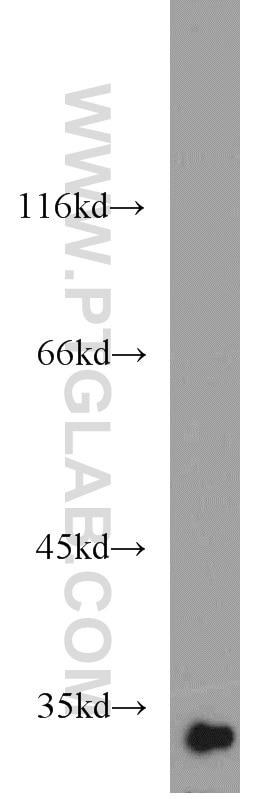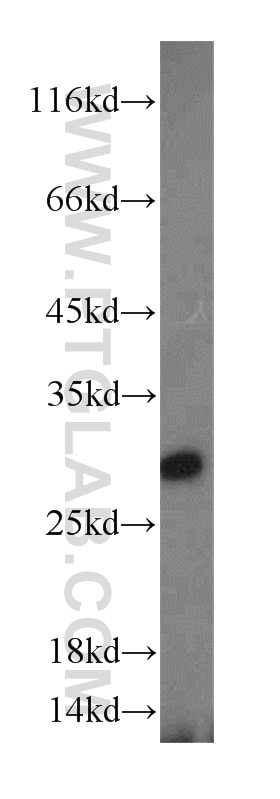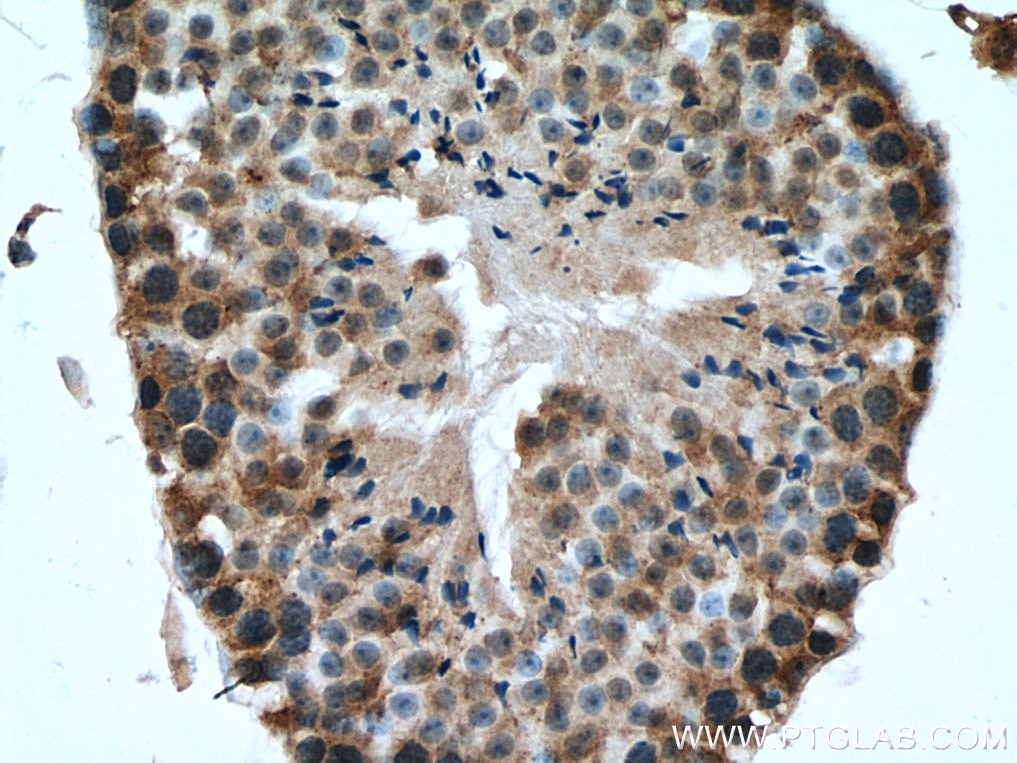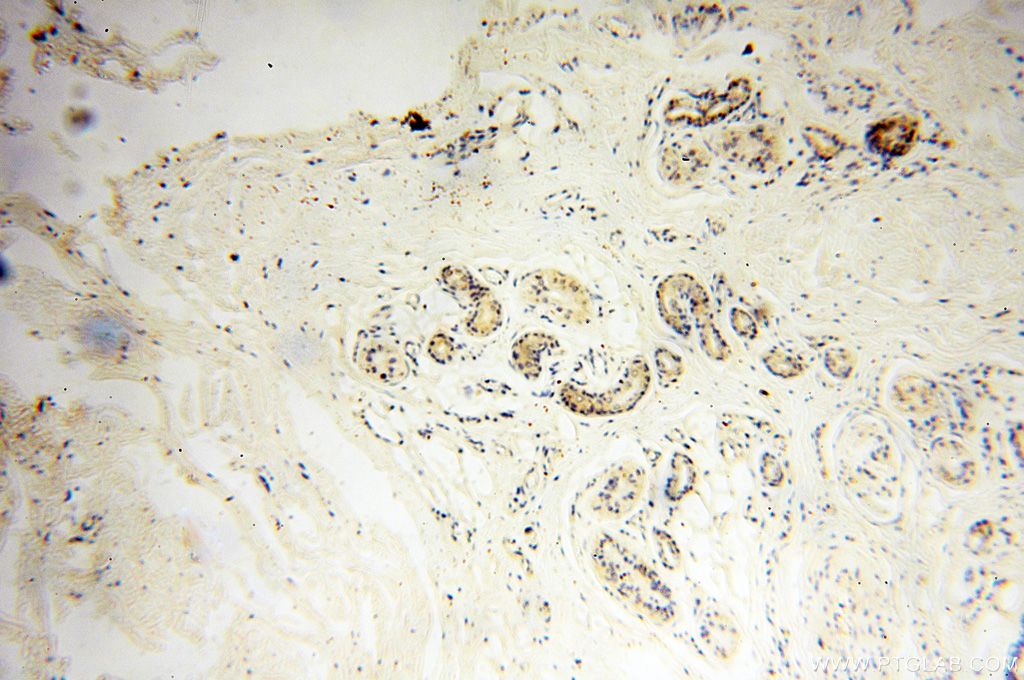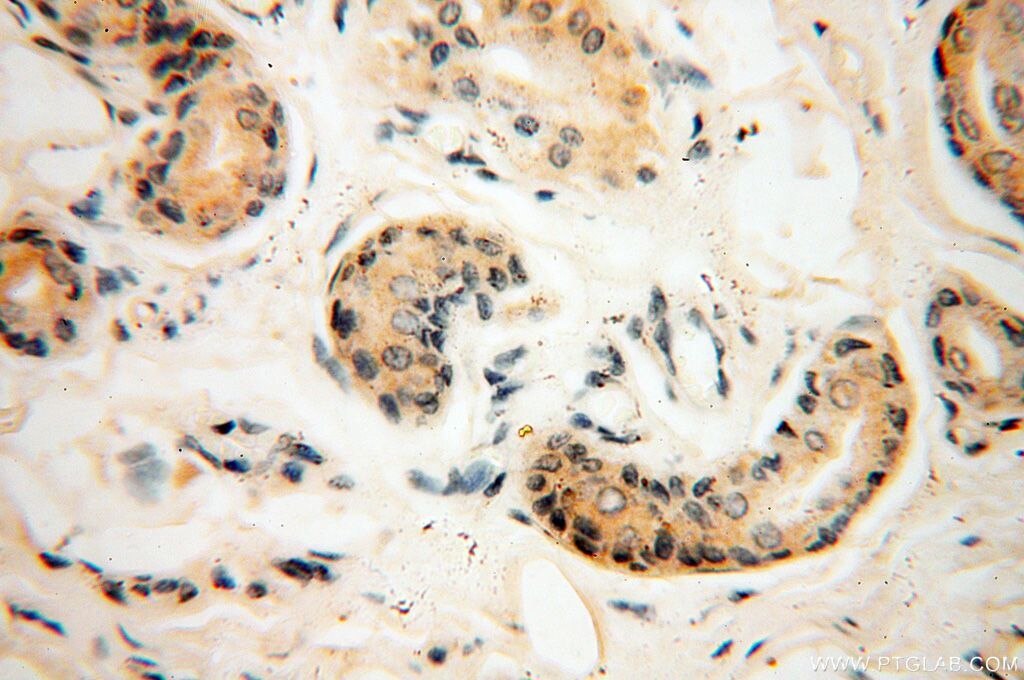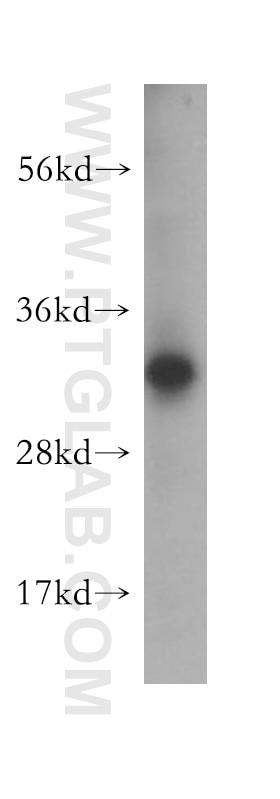- Featured Product
- KD/KO Validated
CHMP1A Polyklonaler Antikörper
CHMP1A Polyklonal Antikörper für IF, IHC, IP, WB,ELISA
Wirt / Isotyp
Kaninchen / IgG
Getestete Reaktivität
human, Maus
Anwendung
WB, IP, IHC, IF, ELISA
Konjugation
Unkonjugiert
Kat-Nr. : 15761-1-AP
Synonyme
Galerie der Validierungsdaten
Geprüfte Anwendungen
| Erfolgreiche Detektion in WB | HEK-293-Zellen, A431-Zellen, HeLa-Zellen, Mauslungengewebe, Mausnierengewebe |
| Erfolgreiche IP | HEK-293-Zellen |
| Erfolgreiche Detektion in IHC | Maushirngewebe, humanes Hautgewebe, humanes Lungengewebe, Maushodengewebe Hinweis: Antigendemaskierung mit TE-Puffer pH 9,0 empfohlen. (*) Wahlweise kann die Antigendemaskierung auch mit Citratpuffer pH 6,0 erfolgen. |
| Erfolgreiche Detektion in IF | HepG2-Zellen |
Empfohlene Verdünnung
| Anwendung | Verdünnung |
|---|---|
| Western Blot (WB) | WB : 1:500-1:1000 |
| Immunpräzipitation (IP) | IP : 0.5-4.0 ug for 1.0-3.0 mg of total protein lysate |
| Immunhistochemie (IHC) | IHC : 1:50-1:500 |
| Immunfluoreszenz (IF) | IF : 1:50-1:500 |
| It is recommended that this reagent should be titrated in each testing system to obtain optimal results. | |
| Sample-dependent, check data in validation data gallery | |
Veröffentlichte Anwendungen
| KD/KO | See 3 publications below |
| WB | See 5 publications below |
| IHC | See 1 publications below |
| IF | See 3 publications below |
Produktinformation
15761-1-AP bindet in WB, IP, IHC, IF, ELISA CHMP1A und zeigt Reaktivität mit human, Maus
| Getestete Reaktivität | human, Maus |
| In Publikationen genannte Reaktivität | human, Maus |
| Wirt / Isotyp | Kaninchen / IgG |
| Klonalität | Polyklonal |
| Typ | Antikörper |
| Immunogen | CHMP1A fusion protein Ag8389 |
| Vollständiger Name | chromatin modifying protein 1A |
| Berechnetes Molekulargewicht | 196 aa, 22 kDa |
| Beobachtetes Molekulargewicht | 33 kDa, 25 kDa |
| GenBank-Zugangsnummer | BC007527 |
| Gene symbol | CHMP1A |
| Gene ID (NCBI) | 5119 |
| Konjugation | Unkonjugiert |
| Form | Liquid |
| Reinigungsmethode | Antigen-Affinitätsreinigung |
| Lagerungspuffer | PBS mit 0.02% Natriumazid und 50% Glycerin pH 7.3. |
| Lagerungsbedingungen | Bei -20°C lagern. Nach dem Versand ein Jahr lang stabil Aliquotieren ist bei -20oC Lagerung nicht notwendig. 20ul Größen enthalten 0,1% BSA. |
Hintergrundinformationen
Charged multivesicular body protein 1A (CHMP1A), also known as chromatin modifying protein 1A, is a member of the ESCRT-III (endosomal sorting complex required for transport III) complex which is involved in degradation of internalized transmembrane receptor proteins and formation of multivesicular bodies (MVBs) (PMID: 16730941). CHMP1A has both nuclear and cytoplasmic distributions (PMID: 11559748; 11559747). Subcellular localization of CHMP1A seems to vary depending on the cell type (PMID: 23023333). CHMP1A is required for MVBs formation and has a role in stable gene silencing within the nucleus. Besides, the tumor suppressor role of CHMP1A has also been reported (PMID: 18787405; 22261332).
Protokolle
| Produktspezifische Protokolle | |
|---|---|
| WB protocol for CHMP1A antibody 15761-1-AP | Protokoll herunterladen |
| IHC protocol for CHMP1A antibody 15761-1-AP | Protokoll herunterladen |
| IF protocol for CHMP1A antibody 15761-1-AP | Protokoll herunterladen |
| IP protocol for CHMP1A antibody 15761-1-AP | Protokoll herunterladen |
| Standard-Protokolle | |
|---|---|
| Klicken Sie hier, um unsere Standardprotokolle anzuzeigen |
Publikationen
| Species | Application | Title |
|---|---|---|
Nat Cell Biol Endosomal membrane tension regulates ESCRT-III-dependent intra-lumenal vesicle formation. | ||
J Extracell Vesicles Accessory ESCRT-III proteins are conserved and selective regulators of Rab11a-exosome formation | ||
Nat Commun A single genetic locus controls both expression of DPEP1/CHMP1A and kidney disease development via ferroptosis.
| ||
Nat Commun Mechanism of Ca²⁺-triggered ESCRT assembly and regulation of cell membrane repair. | ||
Cell Rep The ESCRT-III Protein CHMP1A Mediates Secretion of Sonic Hedgehog on a Distinctive Subtype of Extracellular Vesicles.
| ||
Cell Rep Resolving ESCRT-III Spirals at the Intercellular Bridge of Dividing Cells Using 3D STORM.
|



